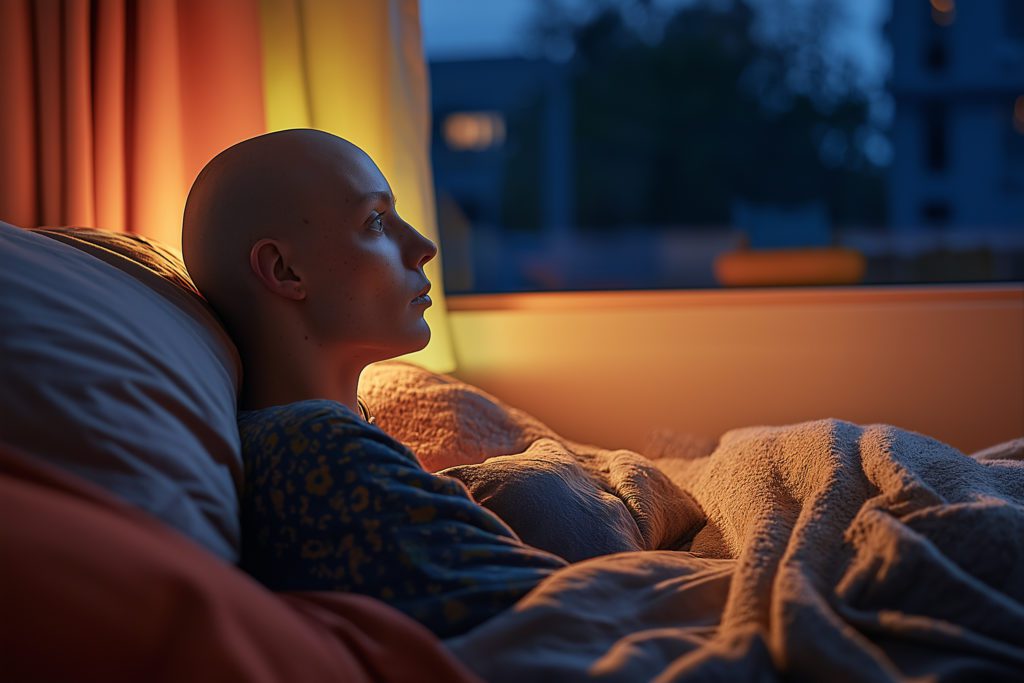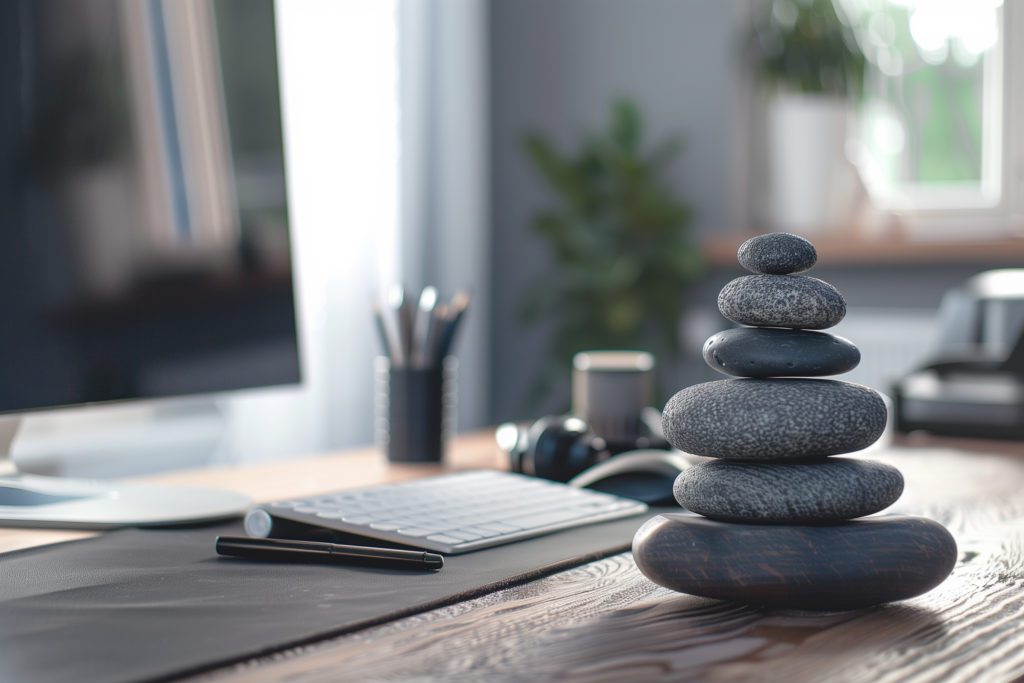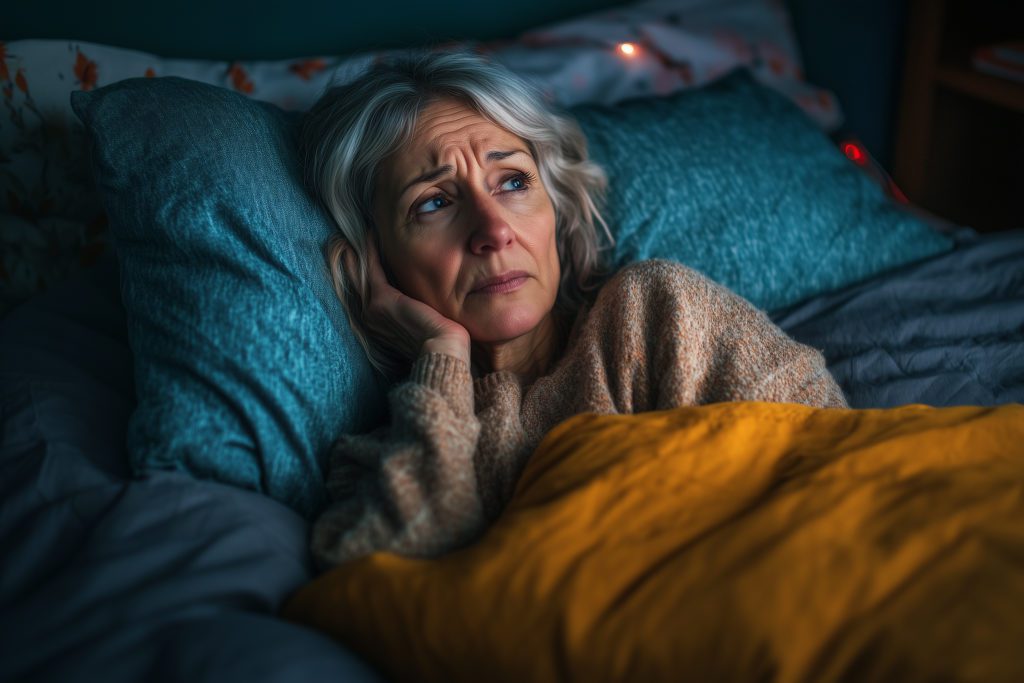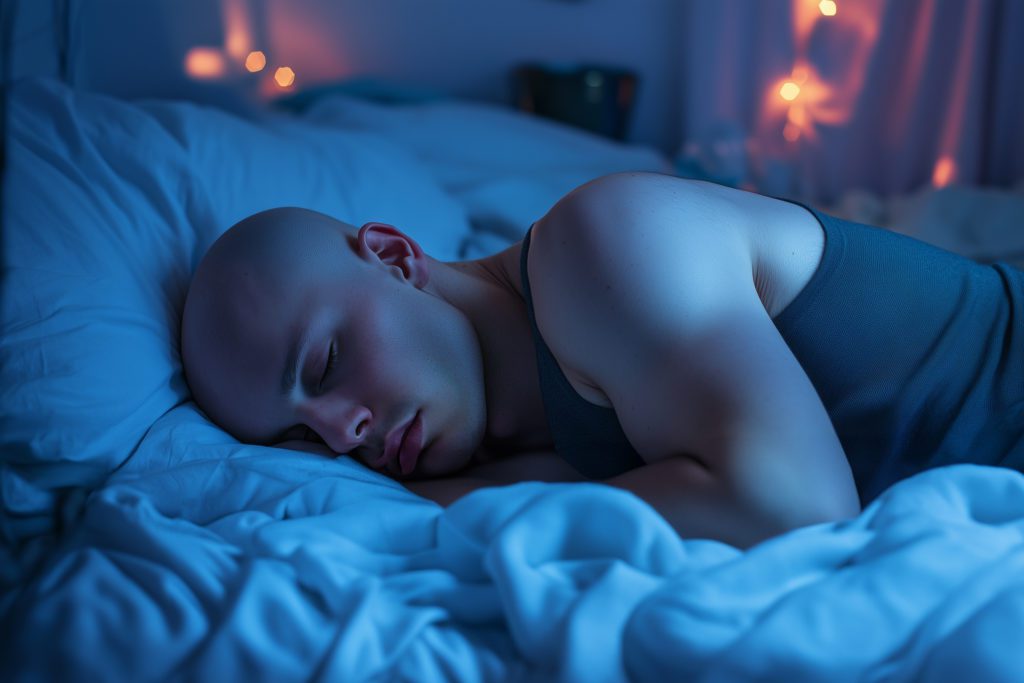
Insomnia and Menopause: Strategies for Improving Sleep Quality
Menopause brings along sleep-disrupting symptoms such as hot flashes. Explore how menopause contributes to insomnia and strategies to improve sleep.

Menopause is a time of significant transition in a woman’s life as her hormone levels see a big shift, and this doesn’t come without its side effects. One area that can be affected is a woman’s ability to fall asleep, which is why insomnia can appear during menopause.
Despite the appearance of insomnia, menopausal women can take action against it so that they can sleep easier.
Sleep During Menopause
Women going through menopause can see many disturbances in their sleep, resulting in insomnia. Whether it’s difficulty falling asleep or frequent nighttime awakenings that are then impossible to fall back asleep after, insomnia can be common in this age group.
The Hormonal Influence
One of the reasons why insomnia is more common during menopause is because of the hormonal shift that defines this stage. During menopause, estrogen levels decline, which eventually leads to the cessation of periods. However, declining estrogen levels also cause various symptoms to pop up, including hot flashes, which can be very uncomfortable. If hot flashes occur at night, when trying to fall asleep, it may make someone uncomfortable enough to be unable to fall asleep.
Other symptoms that can be common when estrogen levels decline include joint aches and pains and bladder problems, both of which can contribute to sleep disruption.
There’s another hormone at play during menopause, as well: progesterone. Progesterone is not only responsible for regulating the female menstruation cycle, but it also has a sleep-inducing effect. When it declines during menopause, its sleep-promoting influences dissipate, which can contribute to difficulty falling asleep.
Increasing Risk of Sleep Disorders
Menopause is also linked to an increase in sleep disorders. Obstructive sleep apnea, in particular, has been linked to night sweats and hot flashes, which are typical symptoms of menopause.
Sleep apnea may also be tied to declining progesterone levels. Progesterone can affect muscle activity in the back of the throat, acting as a stimulus for breathing. However, a decline in progesterone can contribute to partial obstruction of the airway and reduce breathing drive, which can lead to sleep apnea.
Restless leg syndrome (RLS) is another sleep disorder that may affect women during menopause, with women, in general, more likely than men to have it. RLS is characterized by a tingling, crawling sensation that makes leg movement an irrepressible urge. One survey found that 15.7% of their respondents were diagnosed with RLS, and it was more prevalent in women who also had night sweats.
How to Improve Sleep Quality
Even though menopause may affect your sleep, there are ways to take back your nights, even when your hormone levels are shifting.
Focus on Sleep Hygiene
Your body may feel out of whack as the hormonal changes occur, but you can still control your nighttime habits leading up to bed to promote a better night of sleep. In fact, improving sleep hygiene remains one of the first tips for treating insomnia, no matter its cause.
Ways to improve your sleep hygiene include:
- Follow a regular schedule. Go to bed and wake up at the same time each day. This helps to regulate your circadian rhythm, which then leads to the regulation of some crucial hormones, such as the sleepiness hormone melatonin.
- Optimize your bedroom. To help you fall asleep, be sure your bedroom is setting the stage for success. Keep your bedroom dark, cool, and quiet, with temperature especially important if you’re getting hot flashes. Also, keep electronics and their bright lights out of the bedroom when trying to sleep.
- Change your sheets. For menopausal women suffering from hot flashes and night sweats, consider changing your sheets to cooling types. Mattress toppers, as well as pillows, can also offer this benefit, helping to keep you cool.
- Curate a relaxing bedtime routine. To help ease you into sleep, be sure to fill the time before bed with relaxing activities, such as taking a warm bath or curling up with a good book. By avoiding activities that are exciting and adrenaline-boosting, you’ll be ready to drift off to sleep.
Exercise
Sometimes, a good night of sleep starts with the right habits during the day—exercise is one of them.
Especially for women who have insomnia, a condition characterized by difficulty falling asleep, exercise can help. Research shows that athletes are typically highly efficient sleepers, which means that they are able to fall asleep easily rather than stare at the ceiling as hours tick by.
Exercise can also improve sleep quality so that not only will you fall asleep more easily, but the sleep that you get leaves you feeling more well-rested in the morning. It’s a win-win.
Exercise during menopause (and beyond) offers more benefits than just better sleep; it also helps you maintain muscle and bone mass, which are critical for avoiding injuries.
If you’re looking to create an exercise program, it’s recommended to include aerobic exercise, strength exercise, and balance exercises, with an aim of 2.5 hours of moderate aerobic activity each week.
Medication and Therapies
If you’re still struggling to sleep during menopause, it may be worthwhile reaching out to a doctor to discuss professional interventions.
Research has shown that some selective serotonin reuptake inhibitors (SSRIs) have been able to address sleep issues in those going through menopause. Hormone replacement therapies, as well, may be able to improve sleep quality. Discuss interventions with your doctor.
For those who develop a sleep disorder, such as sleep apnea, during menopause, treatment for the disorder can help to improve sleep quality.
Insomnia and Menopause
The changing hormone levels during menopause can cause sleep-disturbing symptoms to appear, whether it’s hot flashes or the more serious sleep apnea. However, by improving your sleep hygiene, exercising during the day, and discussing treatments with a doctor, you can help improve your nights.

Written by
Jessica G
Medical writer freelancer who has written hundreds of articles on varying topics. Masters of Engineering degree in Biomedical Engineering.
Download Pillow
Get help
Press & News
Legal
Connect
X (Twitter)
Company
Copyright © Neybox Digital Ltd.



